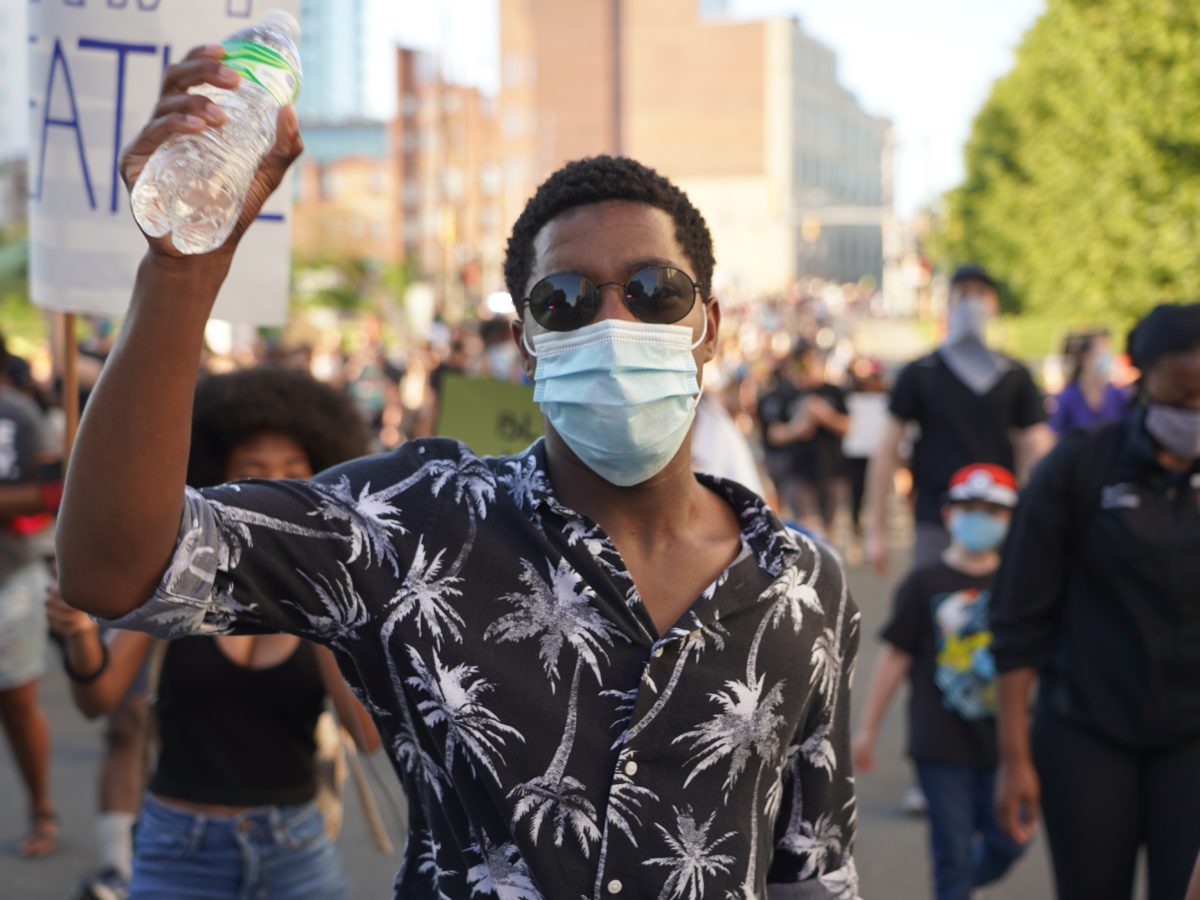
This is part of a series featuring student voices. Read more articles written by high school and college student authors here.
I was 11-years-old when Trayvon Martin was gunned down in 2012. I heard the cries of his family and community for justice. Most of all, I was first exposed to the harsh reality of what it is to be an African American male in America.
I was reminded of those feelings 74 days ago at the time of this writing, when the death of George Floyd, yet another African American male whose life was taken by police brutality, shook America.
As you can probably tell, I’m a numbers guy, so I will go through a short timeline of the last 56 years.
In 1964, 56 years ago, after Rosa Parks sparked the Montgomery bus boycotts, after Martin Luther King led marches throughout the country, and after the Greensboro 5 popularized the idea of sit-ins, the Civil Rights Act of 1964 was signed into law by President Lyndon B. Johnson.
That was supposedly the start of progress and new beginnings. After the Civil Rights Act, as well as many other laws that created the illusion of equality and justice were put into effect, African-American people still faced racism and bias in every aspect of their lives, from the time they woke up in the morning to the time they went to sleep at night.
In 1982, only 38 years ago, President Ronald Reagan declared a formal “War on Drugs” and laid the groundwork for mass incarceration of millions of people of color, especially young minority males.
Reagan declared that drugs, such as crack cocaine, were a threat to the United States and its national security, so drug offenders faced lifetime sentences. While drug offenders were everywhere, and of every race, the focus was on crack cocaine and not powder, consequentially imprisoning a disproportionate amount of Black and Brown people. Social campaigns, as well as the media, embraced the growing movement and painted a picture that ignored cocaine use among white people and painted crack cocaine as a problem in areas that were predominantly in neighborhoods of color.
In 1992, 28 years ago, the beating of Rodney King, an African American man, was filmed, sparking one of the largest race riots in history, the 1992 Los Angeles riots.
After King was pulled over for speeding by highway patrol officers in California, events escalated and several police officers were filmed beating and kicking King, even after he was on the ground. Over five days, rioting plagued the city, more than 50 people died, and more than 1,000 buildings were left damaged.
After the death of George Floyd, protests and movements began sparking across the country. For many, this is the first time, but for many others, this is a continuation of a long-fought war for social justice and equality. Although America elected its first African American president and passed various laws to promote equality, and there has been an extensive conversation for more than 56 years about progress toward racial equality, was it all an illusion? Was there any “progress” in the first place? Where is the proof that steps toward “progress” have worked?
According to Merriam-Webster’s dictionary, progress simply means to move forward or proceed. Throughout history, the cycles of protest and movements have come and gone, sometimes in a matter of days, like in Los Angeles, and sometimes weeks, but all of that has changed this year. Since video of the killing of George Floyd went viral on May 25, companies have changed their branding, lawmakers have expressed support, but most importantly protesters have stayed consistent. In North Carolina, there have been protests from Asheville to Wilmington, started by people of all ages, especially youth pushing for progress.
Activism, especially by youth, has been sprouting frequently in the past years, but this year is different. These protests are no longer split into categories such as environmentalism, gun rights, and LGBTQIA+ rights — now, it’s a collective fight for the most basic rights, human rights. Youth and adults alike realize that if the world can’t move past conversations about race, the world will not be able to progress and accomplish anything else.
If there was any “progress” in the conversation about racial equality, why have there been so many “slip-ups”? George Floyd was killed in the street in Minneapolis for an alleged counterfeit bill; Trayvon Martin was killed for simply walking down the street with a look that elicited “suspicion”; Eric Garner was killed on suspicion of illegally selling loose cigarettes. But is it the same on the other side of the aisle?
Educators and teachers create curricula around this elusive idea of “progress,” but one thing that should be on their minds is that this year, more than anything, should show that education about “progress” should change directions.
Instead of teaching solely about the positive progress — the end of slavery, the Civil Rights Act of 1964, election of the first Black president — there should be lessons on the downfalls of said “progress” and where there has been failure to see any over the years.



